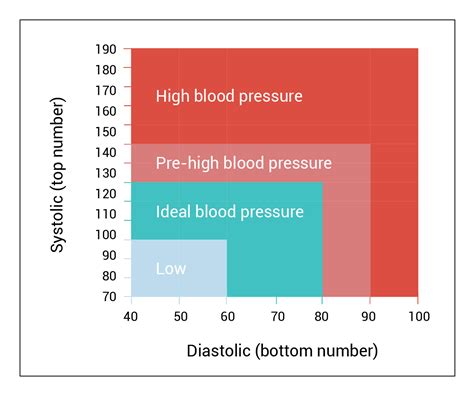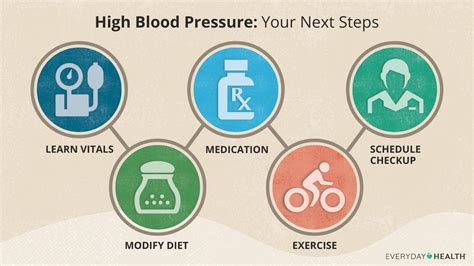Intro
Discover the ideal Normal Blood Pressure Range, including systolic and diastolic readings, to maintain a healthy cardiovascular system and prevent hypertension, hypotension, and related heart diseases.
Maintaining a healthy blood pressure is crucial for overall well-being, as it plays a significant role in preventing cardiovascular diseases, strokes, and kidney damage. Blood pressure is the force exerted by blood against the walls of arteries, and it is measured in millimeters of mercury (mmHg). The normal blood pressure range is a topic of great interest, as it helps individuals understand their risk of developing hypertension and take preventive measures. In this article, we will delve into the importance of maintaining a normal blood pressure range, its benefits, and provide guidance on how to achieve and sustain it.
Understanding blood pressure is essential, as it is a critical indicator of cardiovascular health. The American Heart Association (AHA) defines normal blood pressure as a systolic pressure of less than 120 mmHg and a diastolic pressure of less than 80 mmHg. The systolic pressure represents the maximum pressure exerted on the arteries when the heart beats, while the diastolic pressure represents the minimum pressure between beats. It is essential to monitor blood pressure regularly, as high blood pressure can lead to severe health complications, including heart attacks, strokes, and kidney failure.
The importance of maintaining a normal blood pressure range cannot be overstated. Hypertension, or high blood pressure, affects millions of people worldwide, and it is a significant risk factor for cardiovascular diseases. According to the World Health Organization (WHO), hypertension is responsible for approximately 12.8% of all deaths worldwide. Moreover, high blood pressure can lead to other health complications, such as kidney disease, vision loss, and cognitive decline. Therefore, it is crucial to understand the normal blood pressure range and take preventive measures to maintain a healthy blood pressure.
Understanding Blood Pressure Readings

Factors That Affect Blood Pressure
Several factors can affect blood pressure, including: * Age: Blood pressure tends to increase with age. * Family history: Individuals with a family history of hypertension are more likely to develop high blood pressure. * Obesity: Excess weight can increase blood pressure. * Physical activity: Regular physical activity can help lower blood pressure. * Diet: A diet high in sodium, sugar, and saturated fats can increase blood pressure. * Stress: Chronic stress can raise blood pressure.Benefits of Maintaining a Normal Blood Pressure Range

Lifestyle Changes to Maintain a Normal Blood Pressure Range
Making lifestyle changes can help maintain a normal blood pressure range. Some of these changes include: * Engaging in regular physical activity: Aim for at least 150 minutes of moderate-intensity aerobic exercise per week. * Eating a healthy diet: Focus on consuming fruits, vegetables, whole grains, and lean protein sources. * Reducing sodium intake: Limit sodium intake to less than 2,300 mg per day. * Managing stress: Engage in stress-reducing activities, such as meditation, yoga, or deep breathing exercises. * Getting enough sleep: Aim for 7-8 hours of sleep per night.Monitoring Blood Pressure

Medications for High Blood Pressure
In some cases, medications may be necessary to manage high blood pressure. Some common medications for high blood pressure include: * Diuretics: Help remove excess fluid from the body. * Beta blockers: Slow the heart rate and reduce blood pressure. * ACE inhibitors: Relax blood vessels and reduce blood pressure. * Calcium channel blockers: Relax blood vessels and reduce blood pressure.Complications of High Blood Pressure

Preventing High Blood Pressure
Preventing high blood pressure is crucial for maintaining a normal blood pressure range. Some ways to prevent high blood pressure include: * Eating a healthy diet: Focus on consuming fruits, vegetables, whole grains, and lean protein sources. * Engaging in regular physical activity: Aim for at least 150 minutes of moderate-intensity aerobic exercise per week. * Managing stress: Engage in stress-reducing activities, such as meditation, yoga, or deep breathing exercises. * Getting enough sleep: Aim for 7-8 hours of sleep per night.Treatment Options for High Blood Pressure

Managing High Blood Pressure
Managing high blood pressure requires a comprehensive approach, including: * Monitoring blood pressure regularly: Using a home blood pressure monitor to track blood pressure regularly. * Taking medications as prescribed: Taking medications as directed by a healthcare provider. * Making lifestyle changes: Making lifestyle changes, such as eating a healthy diet, engaging in regular physical activity, and managing stress.Conclusion and Next Steps

What is the normal blood pressure range?
+The normal blood pressure range is a systolic pressure of less than 120 mmHg and a diastolic pressure of less than 80 mmHg.
What are the risks of high blood pressure?
+High blood pressure can lead to severe health complications, including heart attacks, strokes, kidney disease, and vision loss.
How can I maintain a normal blood pressure range?
+Maintaining a normal blood pressure range can be achieved by making lifestyle changes, such as eating a healthy diet, engaging in regular physical activity, managing stress, and getting enough sleep.
